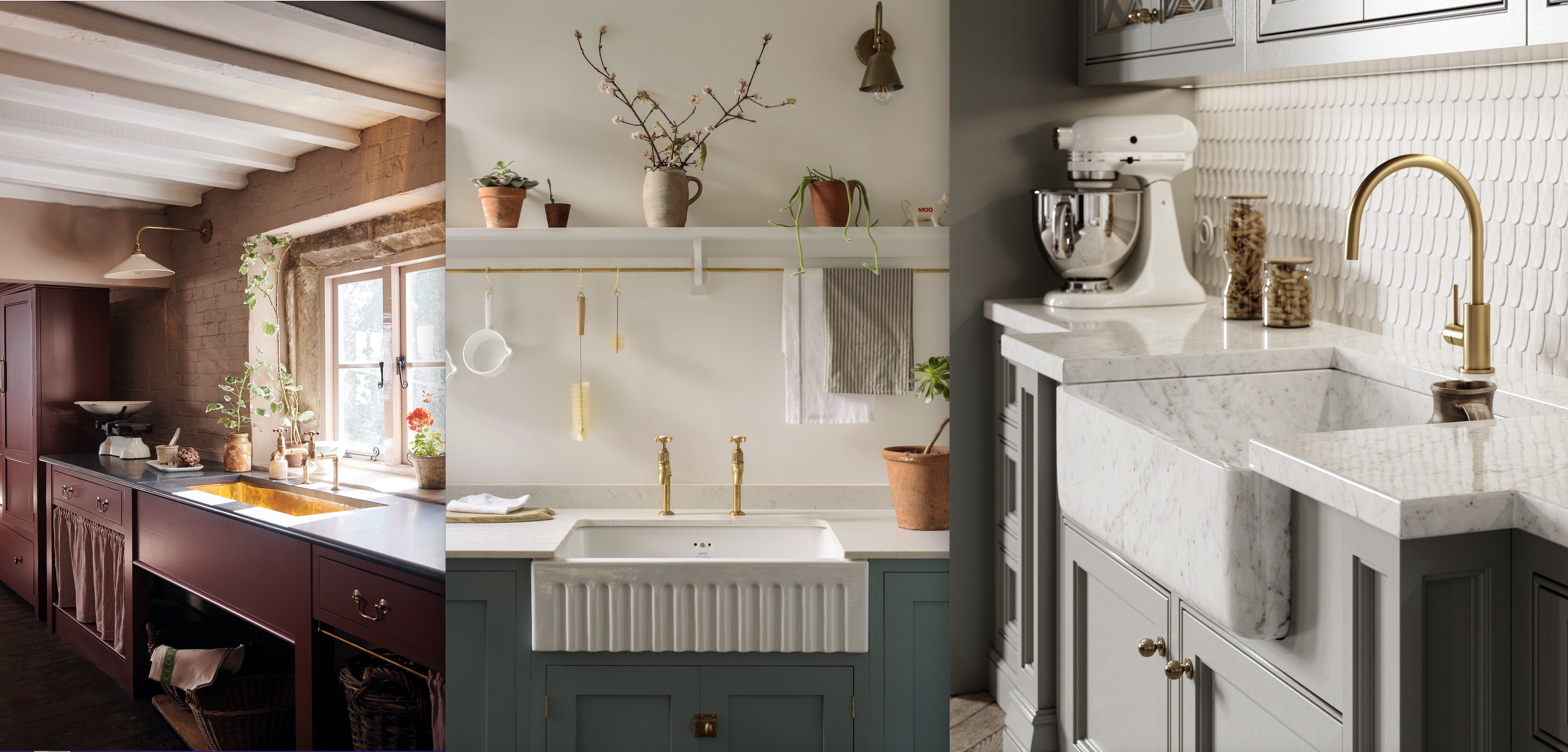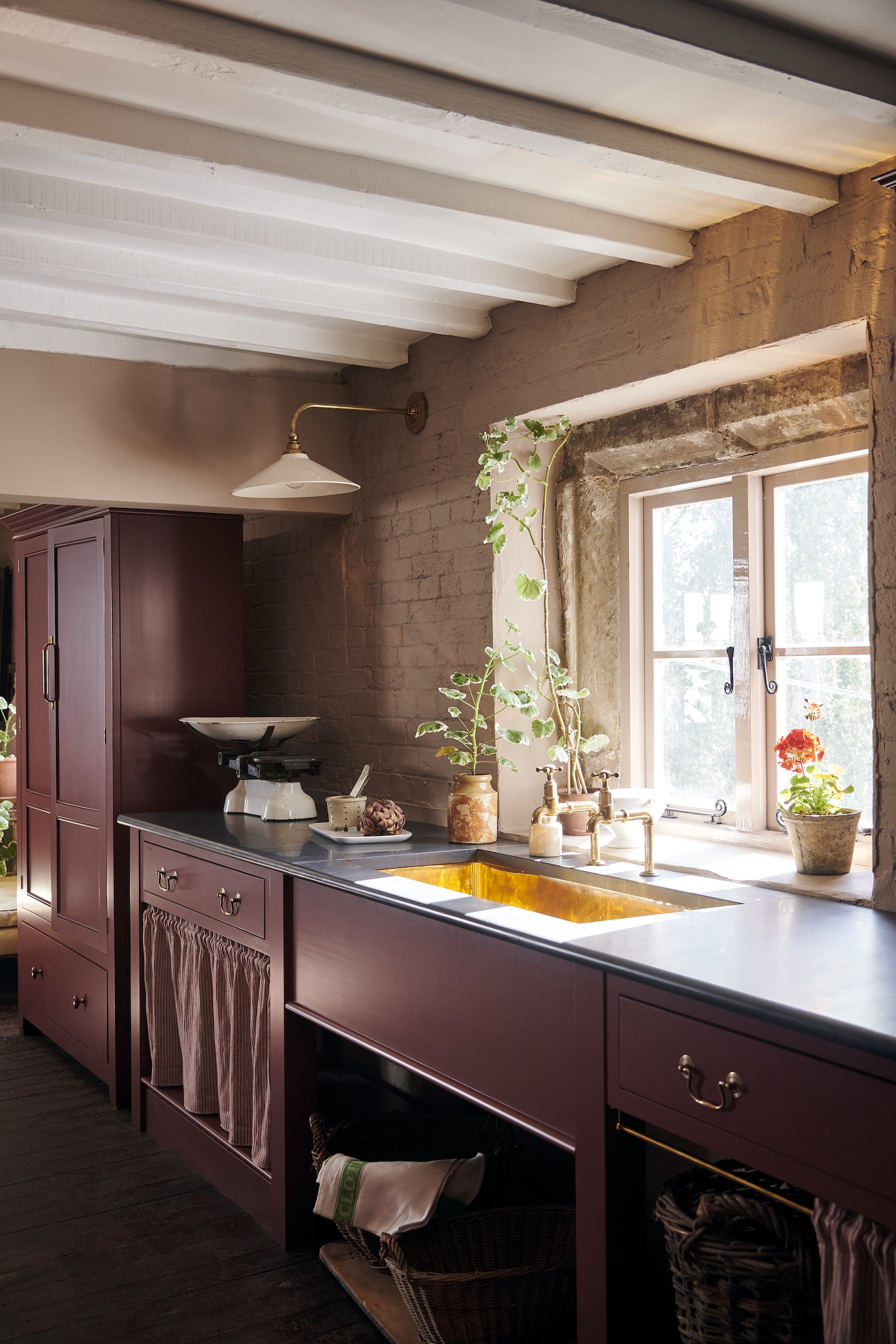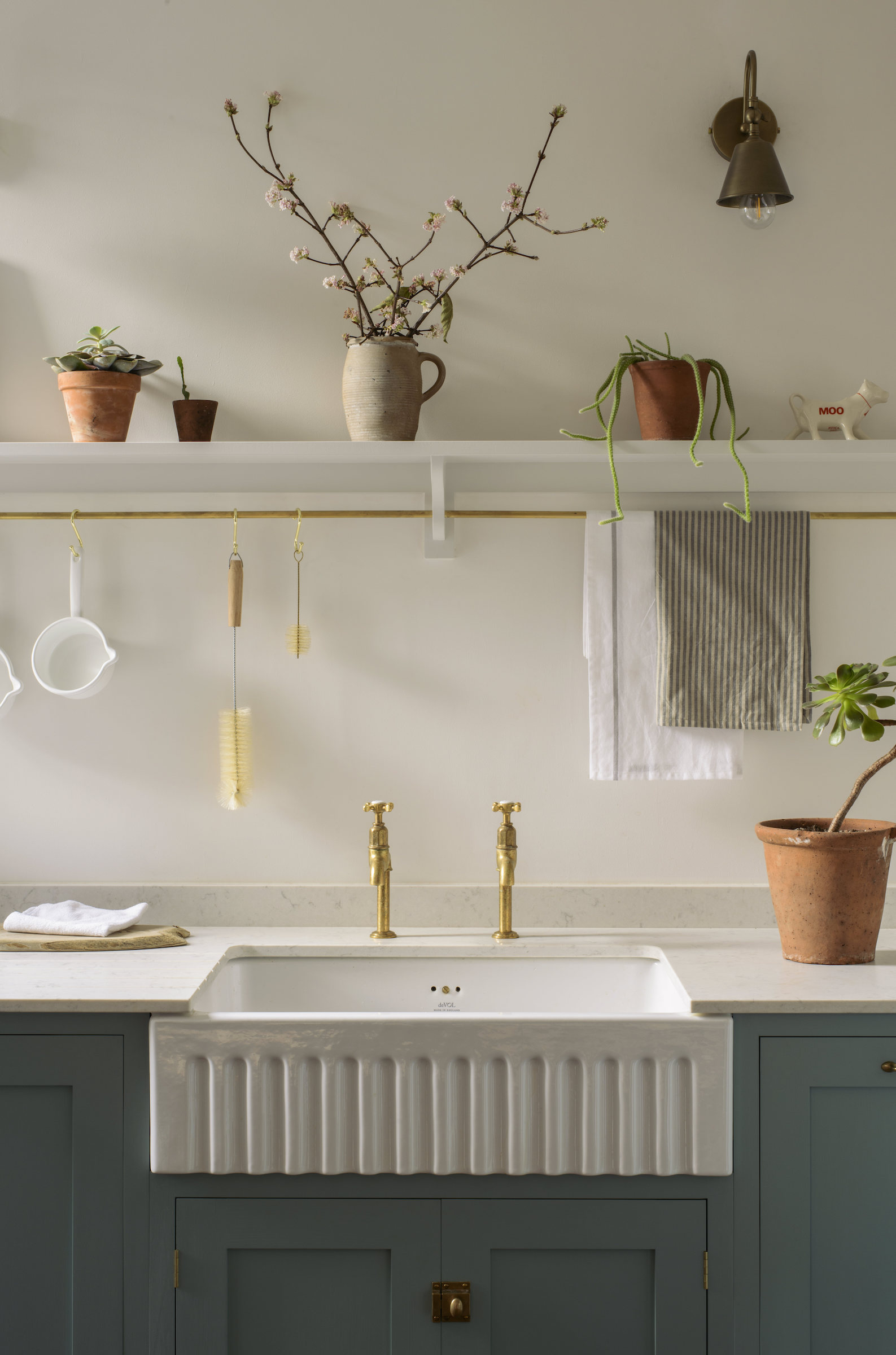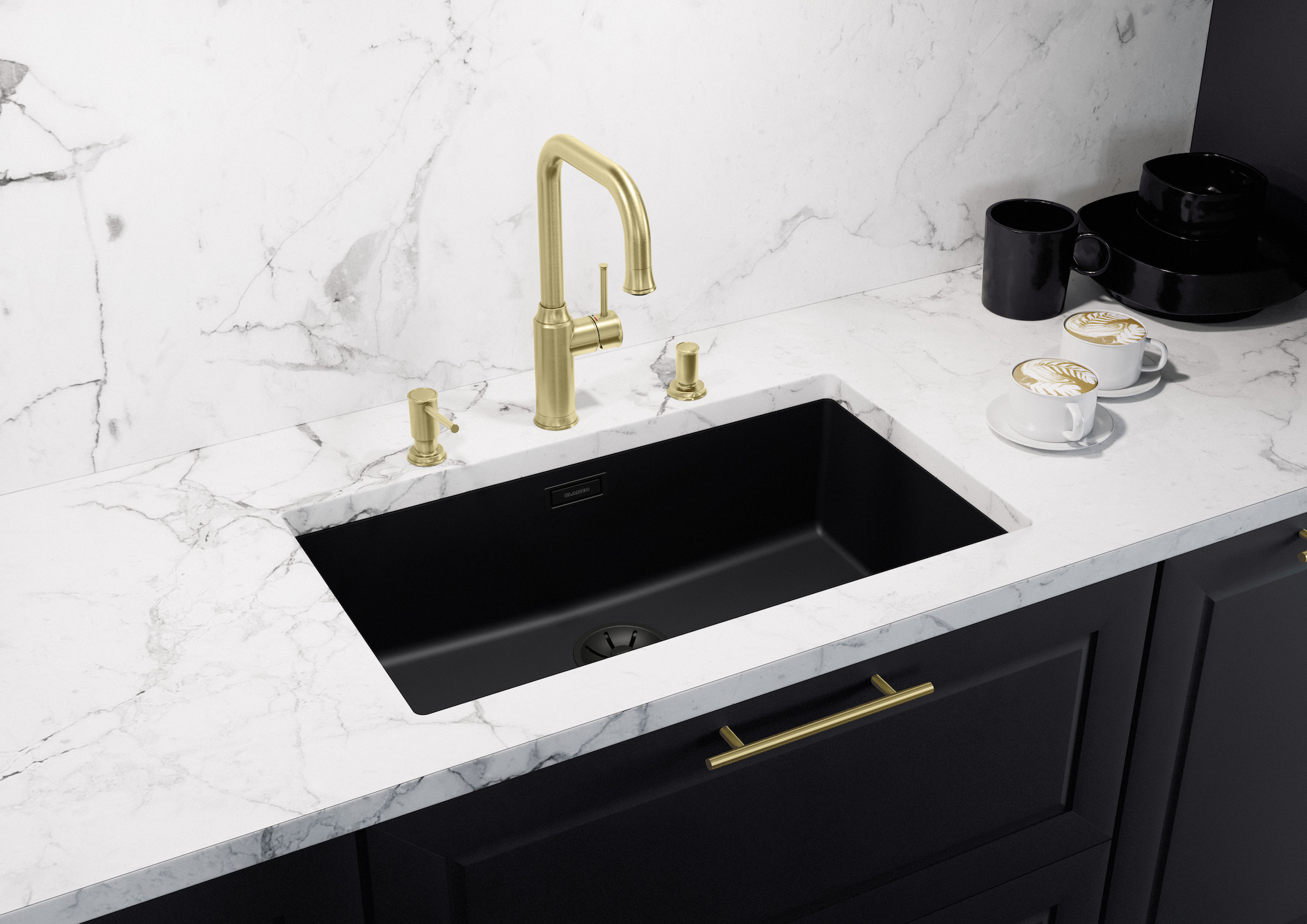The best 5 kitchen sink materials – and how to choose the best type and design for your home
Don’t let the sink be your kitchen’s dirty style secret. With a wide range of materials and colours to choose from, this essential feature can truly shine


Andrea Childs
It might seem obvious, but you'd be surprised by how often the kitchen sink becomes an afterthought when it comes to designing a kitchen, but it shouldn't be. In fact, the sink can be a focal point.
For all it's an essential element of any well-thought-through kitchen, the kitchen sink can come down the list of design decisions. After all, there are the basics of the kitchen layout ideas, choices about kitchen cabinet style, and your kitchen color ideas and decorating scheme to distill and define.
But as the number of sink ideas attests, this practical essential is increasingly seen as a critical element of any design. 'This trend is being led by the increasing number of kitchen sink materials available, all of which bring a different style benefit,' says Andréa Childs, Editor of Country Homes & Interiors magazine. 'From gleaming brass to honed stone and hi-tech composites, the choice has never been better.'
1. Metal sinks

As the centerpiece of a hardworking wet zone, the sink needs to be good-looking and in keeping with your kitchen design, but it also needs to be practical, durable, and easy to keep clean.
Stainless steel has long been a material of choice for its hygienic properties, resistance to stains, rust, and corrosion, and affordability. But it is not the only metal on the market; copper and brass sinks can be used to make a design statement.
‘Solid brass is actually a very traditional material to use for a sink,’ says Helen Parker, creative director of deVOL Kitchens. ‘It’s a showstopper, but also a really practical and natural product that will age gently and beautifully over time.’
Pictured here is the Polished Brass single sink, deVOL.
Design expertise in your inbox – from inspiring decorating ideas and beautiful celebrity homes to practical gardening advice and shopping round-ups.
2. Ceramic sinks

Ceramic and fireclay sinks are known for their hard, smooth, impervious surfaces, which resist heat, stains and impact. They also have a classic style that’s well suited to country kitchen ideas.
‘The Belfast and Butler are the two archetypes of the traditional kitchen sink,’ explains Jonathan Britton, kitchen brand manager at Shaws of Darwen and House of Rohl. A Belfast differs from a Butler in having a weir overflow to drain excess water, but either is a key ingredient if you want to know how to achieve a farmhouse kitchen look.
Fireclay is extra dense and hard, giving sinks a particular durability. See here is the Fluted Bowland fireclay sink, Shaws of Darwen.
3. Marble sinks

Marble is already a standby for luxury kitchen design, whether it's seen in kitchen countertop ideas or stove backsplash options.
‘Marble is one of the most coveted materials around the world and renowned for its excellence and durability,’ says Mike Manders, managing director of Lusso Stone. It is, however, more porous than some other natural stones or synthetic materials, so it is more likely to stain and scratch and require ongoing maintenance.
Make it your choice if you admire its natural qualities and enjoy its developing patina of age. ‘You are guaranteed timelessness and complete individuality, as every piece of marble benefits from being unique, displaying different markings subject in each block,’ adds Mike.
Shown here is the Louis Carrara Belfast marble 800 sink, Lusso Stone.
4. Composite sinks

Composite sinks are typically engineered from quartz sand mixed with acrylic resin to produce a hardwearing, non-porous material available in a host of colors. It means you can choose a sink shade to match, complement or contrast with your kitchen worktop, depending on your taste.
Ian Sanders, product manager for Blanco, explains that the brand’s composite Silgranit sink material, ‘is durable and stain-, scratch-, acid- and heat-resistant, and the food-safe, the easy-care surface is quick and easy to clean.’
Some composite sinks feature anti-bacterial surface protection. Pictured above is the Subline 700-U sink in Silgranit Black, Blanco.
5. Integrated sinks

‘With the trend for open-plan living, aesthetics have never been more important, as the sink is now often on show within a kitchen-living space,’ says Laura Davie, marketing manager at Cosentino. ‘Once considered a purely practical purchase, sinks are becoming more of a design statement.’
Integrated sinks are created from one piece of quartz surface and designed to offer a joint-free look that integrates smoothly into the worktop. As a manufactured material, a quartz surface has hygienic properties and high resistance to scratches, staining, and heat damage. It is available in plenty of soft neutral colors and marble effects, designed to offer the look of natural stone without maintenance requirements.
This is the Poblenou quartz surface worktop with integrated Integrity Due L sink, Silestone.

Amelia Thorpe is a specialist interiors and design journalist, covering every topic to do with homes from fabrics, furniture and lighting to surfaces, kitchens and bathrooms.
As the daughter of an antique dealer and a lifelong collector of old cookery books and vintage graphics herself, she also has a particular expertise in antiques, mid-century and decorative arts of all kinds.
Drawn to homes because of their importance in the happiness of our lives and the enjoyment they can bring, Amelia has been writing about the topic for more than fifteen years. She has interviewed some of the most influential designers of our time, from Piero Lissoni, Antonio Citterio, Jaime Hayon and Arik Levy to Nina Campbell and Robert Kime.